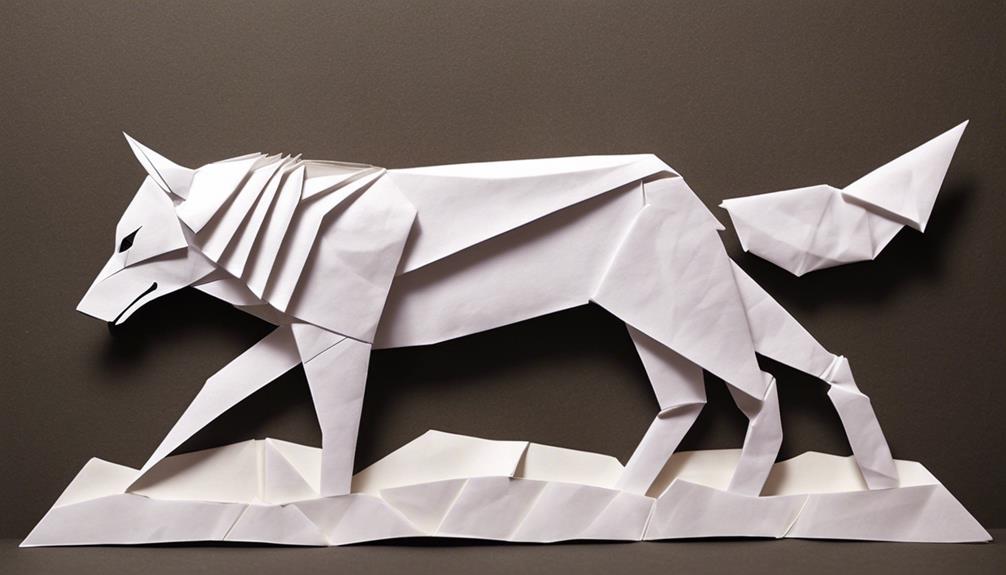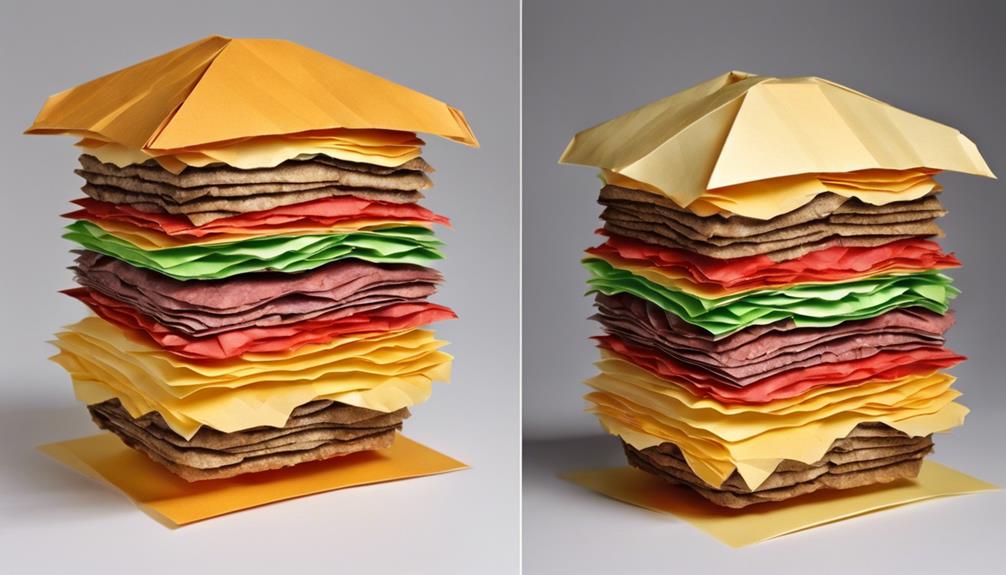The Sigma male, known for independence and personal growth, values solitude. They prioritize self-reliance, authenticity, and deep connections over societal norms. Different from Alphas, they lead subtly, challenging traditional hierarchies. Historical figures like Tesla and Da Vinci epitomize Sigma traits with their innovation and independence. Celebrities like Keanu Reeves embody humility and focus. While no specific zodiac sign defines a Sigma male, their actions and mindset shape their identity. Interested if you fit the Sigma mold? Take the quiz evaluating autonomy and comfort with nonconformity. Curious to explore more about this intriguing archetype's characteristics and traits?
Key Takeaways
- Sigma males prioritize personal growth, independence, and self-reliance.
- They excel in solitude, value deep connections, and authenticity.
- Sigma men challenge societal norms, prioritize personal goals over social validation.
- Their confidence comes from within, embodying nonconformity and introspection.
- Sigma males forge unique paths, emphasizing personal development and individuality.
Sigma Male Lifestyle
The essence of the Sigma Male Lifestyle lies in prioritizing personal space and independence. Sigma males are characterized by their preference for solitude, valuing their own company over constant social interactions. This lifestyle centers around self-reliance and a strong focus on personal growth.
Living by their own rules, sigma males find fulfillment in their independence, often working alone and steering clear of seeking validation from others. Their commitment to personal space allows them the freedom to pursue their own goals and needs without being swayed by societal expectations.
In the world of sigma males, solitude isn't a burden but a source of strength. They thrive in introspection, using their alone time to reflect, plan, and grow as individuals. This lifestyle choice fosters a sense of empowerment and self-sufficiency, enabling sigma males to navigate life on their own terms while continually aiming for personal development.
Sigma Vs Alpha Males

When comparing Sigma and Alpha males, one can observe distinct differences in their approach to social dynamics and personal values. Alpha males typically thrive on dominance, seeking attention and validation within social hierarchies. They prioritize social status and assert their leadership through more overt means.
On the other hand, Sigma males value independence, nonconformity, and introspection over seeking external approval. They prioritize personal goals and self-reliance, often choosing solitude over social validation. Sigmas don't conform to traditional social hierarchies like alphas and betas, preferring to chart their own course in life.
While Sigma males can possess leadership qualities, they tend to exhibit them in a more understated and subtle manner compared to the more overtly dominant alphas. This distinction highlights how Sigma and Alpha males navigate the complexities of social interactions and personal values in their own unique ways.
Traits of Sigma Males

Sigma males exhibit a unique blend of independence, self-assurance, and a tendency to go against the grain. They prioritize personal growth and inner validation, valuing deep connections and introspection over superficial interactions.
Identifying sigma traits involves recognizing their subtle yet influential leadership style, their preference for solitude, and their struggles with emotional connections and societal norms.
Sigma Male Attributes
Embodying a sense of independence and self-assurance, Sigma males possess unique traits that set them apart in social dynamics. Sigma male personality is characterized by introversion, prioritizing personal freedom and self-validation over external approval.
Unlike Alpha males who thrive in leadership roles, Sigma men tend to be nonconformists, finding comfort in solitude and smaller social settings. These men draw their confidence from within, emphasizing self-reliance and self-awareness.
The Sigma personality shines through in their quiet confidence and understated presence, which challenges traditional social hierarchies. In the Sigma male v/s Alpha debate, Sigma males stand out for their ability to navigate social circles with ease while maintaining a strong sense of individuality.
Their unique traits enable them to forge genuine connections based on authenticity rather than conformity, making them valuable contributors to social groups and settings.
Identifying Sigma Traits
Sigma males can be easily recognized by their distinct preferences and behaviors, setting them apart in social dynamics. In contrast to Alpha males who thrive in leadership roles and seek social validation, Sigma males tend to value personal independence and autonomy.
These individuals often prefer solitude and prioritize personal goals over conforming to societal expectations. Unlike Alphas who assert dominance in social settings, Sigma males are more inclined to be introspective and self-reliant, choosing to live life on their own terms.
Described as lone wolves, Sigma males defy traditional standards and prioritize self-sufficiency over seeking approval from others. Their unique behavioral patterns and rejection of social norms make them stand out among people, embodying a sense of individualism that sets them apart from the crowd.
While Sigma males may interact with others, they do so on their own terms, maintaining a sense of independence and autonomy in their interactions with the world.
Benefits of Sigma Males

Independence is a defining trait that sets individuals embodying sigma male characteristics apart from societal norms. Sigma males reap several benefits from their unique qualities:
- Self-Reliant: Sigma males excel in being self-reliant, relying on their own abilities and judgment to navigate through life's challenges. This trait allows them to make decisions based on their values and goals rather than external influences.
- Personal Growth: With a strong focus on personal growth and development, sigma males constantly endeavor to better themselves in various aspects of their lives. This dedication to improvement leads to a fulfilling and meaningful existence.
- Pursue Passions: Sigma males find solace and satisfaction in solitude, allowing them to dive deep into their passions and interests without distractions. This freedom to pursue what truly matters to them fuels their drive and commitment to their chosen paths.
In essence, the benefits of being a sigma male encompass a sense of freedom, purpose, and authenticity that align with their independent and driven nature.
Demerits of Sigma Males

At times, sigma males may unknowingly isolate themselves due to their tendency to romanticize solitude, leading to a lack of meaningful connections. This isolation can result in loneliness, making it challenging for sigma males to build emotional connections with others. Additionally, their struggle to ask for help or support when needed can further exacerbate feelings of isolation and detachment. To illustrate the demerits of sigma males, a table is provided below:
| Pitfalls of Sigma Males | Description | Example |
|---|---|---|
| Loneliness | Preference for solitude may lead to isolation | Isolating oneself from social events |
| Lack of meaningful connections | Struggle to form deep emotional bonds | Avoiding sharing personal feelings with others |
| Emotional detachment | Difficulty in expressing emotions | Keeping feelings bottled up inside |
Famous Sigma Males

Famous Sigma Males have left a lasting impact on history and continue to inspire many today. Examples like Steve Jobs, Nikola Tesla, and Bruce Lee exemplify the independence, creativity, and unconventional thinking often associated with Sigma males.
Their unique approach to life challenges norms and sparks innovation, making them standout figures in various fields.
Notable Sigma Male Examples
Notable figures embodying the traits of Sigma Males include Steve Jobs, Keanu Reeves, Elon Musk, Christopher Nolan, and Nikola Tesla. These individuals have left a significant mark on their respective fields, showcasing the characteristics commonly associated with Sigma Males.
Steve Jobs: Known for his visionary leadership at Apple Inc., Jobs displayed a strong sense of individuality and a relentless pursuit of perfection in product design.
Keanu Reeves: Despite his immense success in Hollywood, Reeves remains humble and grounded, reflecting the Sigma Male trait of staying true to oneself amidst fame and fortune.
Elon Musk: As the driving force behind companies like Tesla and SpaceX, Musk exemplifies the Sigma Male qualities of innovation, risk-taking, and a willingness to challenge the status quo.
These notable examples demonstrate how Sigma Males can thrive in various fields by embracing independence, creativity, and a unique approach to their work.
Sigma Men in History
Throughout history, numerous individuals, including Nikola Tesla, Albert Einstein, Leonardo da Vinci, Ludwig van Beethoven, and Henry David Thoreau, have been recognized as exemplifying the traits of Sigma Males. These famous Sigma males left a lasting mark on history with their unconventional thinking, independent nature, and reclusive tendencies.
Nikola Tesla, known for his innovative inventions, embodied the spirit of a Sigma Male through his unorthodox lifestyle. Albert Einstein, with his groundbreaking theories, showcased the independent and individualistic traits associated with Sigma Males. Leonardo da Vinci's diverse talents in art, science, and engineering highlighted his unconventional approach to creativity, reflecting Sigma Male characteristics.
Similarly, Ludwig van Beethoven's revolutionary compositions and reclusive lifestyle underscored his embodiment of Sigma Male qualities. Lastly, Henry David Thoreau's transcendentalist philosophy emphasizing individualism and solitude solidified his place as a classic example of a Sigma Male in history. These famous Sigma males demonstrated how diverse talents, unconventional paths, and independent thinking can shape the course of history.
Sigma Celebrities Today
Sigma Males continue to make their mark in the modern world through the presence of influential celebrities who embody the key characteristics of this personality type. These famous Sigma males include:
- Keanu Reeves: Known for his humility and reserved nature, Keanu Reeves exemplifies the Sigma male traits of independence and introspection. His private persona and dedication to his craft have solidified his status as a beloved figure in Hollywood.
- Heath Ledger: Remembered for his introspective and independent spirit, Heath Ledger's enigmatic personality resonated with audiences worldwide. His ability to immerse himself in diverse roles showcased his Sigma male qualities of depth and individuality.
- Ryan Gosling: With his low-key demeanor and enigmatic charm, Ryan Gosling captures the essence of a Sigma male. His quiet confidence and focus on his work have established him as a respected actor in the industry, embodying the traits associated with this personality type.
Sigma Male Quotes

Quotes from sigma males often reflect their inner strength and unique perspective on life, emphasizing independence and self-reliance. These individuals, known for their nonconformist attitude and personal growth, often share insights that resonate with their focus on carving out unique paths.
Sigma male quotes frequently revolve around the importance of self-reliance, highlighting the value they place on authenticity and following their own rules rather than conforming to societal norms. Their words often echo the sigma male rule list, emphasizing the significance of inner strength, resilience, and determination in pursuing their objectives.
Through their quotes, sigma males offer a glimpse into their mindset and values, showcasing their individuality and unwavering commitment to living life on their own terms. These quotes serve as a window into the world of sigma males, capturing their essence of independence and self-assuredness with each word they speak.
Sigma Male Zodiac Sign

While certain zodiac signs like Scorpio, Capricorn, and Virgo may exhibit Sigma male characteristics, there's no specific zodiac sign linked to being a Sigma male. Sigma male traits are defined by individual actions and behaviors rather than astrological influences.
The concept of Sigma males goes beyond the scope of zodiac signs, focusing more on personal values and independence. Here are some key points to ponder regarding Sigma male traits and zodiac signs:
- Individual Actions: Sigma males are characterized by their unique approach to life, which is driven by their personal values and beliefs rather than their zodiac sign.
- Behavioral Patterns: While certain zodiac signs may align with Sigma male characteristics, it's the behaviors and mindset of an individual that truly define them as a Sigma male.
- Astrological Influences: Although astrology can provide insights into personality traits, being a Sigma male is more about one's actions and choices rather than the alignment of stars.
Am I a Sigma Male? Quiz

If you're curious about your alignment with Sigma male traits, consider taking an insightful quiz to assess your independence, self-reliance, and nonconformist attitude.
Sigma Males are known for prioritizing personal goals over seeking external validation, often embodying characteristics of independence and self-sufficiency. They thrive in solitude, valuing their own company and autonomy. This unique archetype exudes a mysterious and confident aura, setting them apart from conventional male stereotypes.
By taking a quiz designed to evaluate Sigma Male traits, individuals can gain a better understanding of how they align with the key characteristics associated with this persona. Questions in the quiz may explore your preferences for autonomy, your comfort level with nonconformity, and your approach to social interactions.
Through this assessment, you may uncover whether you exhibit the independence, self-reliance, and nonconformist attitude commonly attributed to Sigma Males.
Frequently Asked Questions
What Are the Characteristics of a Sigma Male?
Sigma males exhibit independence, self-sufficiency, and a nonconformist nature. They prioritize personal goals over societal expectations, value authenticity, deep connections, and self-reliance. Their unique leadership style involves leading by example, inspiring through quiet confidence.
Who Is the Sigma Male Guy?
The sigma male guy is independent, self-sufficient, and values personal goals over societal norms. He thrives in solitude, prioritizes deep connections, and embodies autonomy, self-assurance, and authenticity. His confidence comes from within, inspiring others subtly.
How Do I Know if I Am a Sigma Male?
To know if one is a Sigma male involves reflecting on prioritizing personal goals, independence, and valuing solitude. Embracing authenticity and a nonconformist mindset may signal alignment with Sigma characteristics. Self-reflection is key.
Who Is the Best Sigma Male Character?
When considering the best Sigma male character, it's often debated among fictional works. Characters like James Bond, Sherlock Holmes, and Batman are strong examples. They embody independence, self-reliance, and a mysterious aura.
Conclusion
To sum up, the sigma male is like a lone wolf, traversing life with independence and strength. While they may not seek the spotlight like their alpha counterparts, sigma males possess a quiet confidence and resilience that sets them apart.
Understanding the key characteristics of a sigma male can help individuals identify if they align with this unique personality type. Whether you resonate with this archetype or not, embracing your own individuality and authenticity is key to personal growth and fulfillment.









